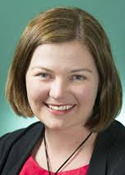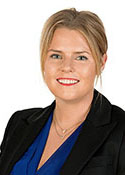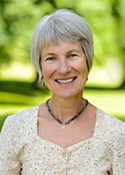Bendigo
Margin: Labor 1.3%
Region: Central Regional, Victoria
In a nutshell: The tide to Labor in Victoria over recent years has made a reasonably safe seat of formerly marginal Bendigo, but a big swing in 2013 reminded them it can’t be taken for granted.
Candidates in ballot paper order

|
ANDY MADDISON ROSEMARY GLAISHER SANDY CADDY LISA CHESTERS MEGAN PURCELL RUTH PARRAMORE ANITA ERIKA DONLON ALAN HOWARD |
The electorate of Bendigo has covered shifting territory in central Victoria since federation, and presently extends southwards from the city itself to Castlemaine and the Macedon Ranges around Woodend, and to smaller rural centres in the west and north. The seat has been in Labor hands since it was gained at the 1998 election by Steve Gibbons, who was succeeded by the current member, Lisa Chesters, in 2013. Labor first won the seat in 1913, but lost it to Billy Hughes when he contested it as Nationalist Prime Minister in the wake of the Labor split of 1917, having recognised he would be not be able to retain his existing safe Labor seat of West Sydney. Hughes would remain member for five years before moving to North Sydney. Bendigo was in conservative hands thereafter until 1949, except when Richard Keane held it for a term after Labor came to office in 1929. George Rankin gained the seat for the Country Party when United Australia Party incumbent Eric Harrison retired in 1937.
Bendigo had the curious distinction of being gained by Labor when it lost office in 1949, then retained until they were finally returned to office in 1972. Labor’s 1949 win was aided by the redistribution that followed the enlargement of parliament, in which Bendigo exchanged rural territory for Castlemaine and Maryborough. John Bourchier won the seat for the Liberals against the trend of a substantial pro-Labor swing in Victoria in 1972, which was variously put down to the entry of a popular Country Party candidate, and attacks on Labor member David Kennedy over state aid and his liberal position on abortion. It has since changed hands in 1983, when Bourchier was unseated by future Victorian Premier John Brumby; in 1990, when Brumby would up on Labor’s nine-seat Victorian casualty list; and in 1998, when Steve Gibbons recovered the seat for Labor upon the retirement of Liberal member Bruce Reid.
Gibbons achieved winning margins over five elections ranging from 1.0% in 2004 to 9.5% in 2010, before announcing he would not seek another term in September 2011. He became notable late in his career for his outspokenness on Twitter, where he proclaimed Kevin Rudd a “psychopath”, Tony Abbott a “douchebag”, Julie Bishop a “narcissistic bimbo”, and Australia Day an “Invasion Day” celebrated by “throwing bits of dead animals on a cooking fire just like the people we dispossessed”. The loss of Gibbons’ personal vote presumably contributed to an 8.2% swing to the Liberals in 2013, compared with a statewide swing of 5.1%. However, it was not sufficient to unseat Labor, whose new candidate, Lisa Chesters, emerged with a margin of 1.3%. Like Gibbons, Chesters had been an official with United Voice, one of the dominant unions of the Socialist Left faction (known in Gibbons’ time as the Liquor Hospitality and Miscellaneous Workers Union).
The Liberals have endorsed Megan Purcell, proprietor of a Maldon homeware store and recent contestant on the Nine Network’s reality television series Farmer Wants a Wife.
Analysis by William Bowe. Read William’s blog, The Poll Bludger.


